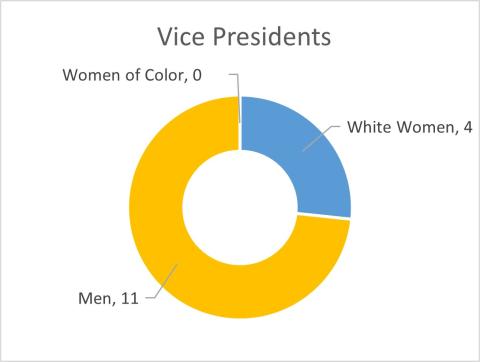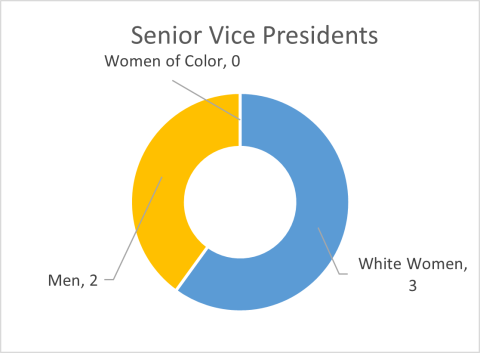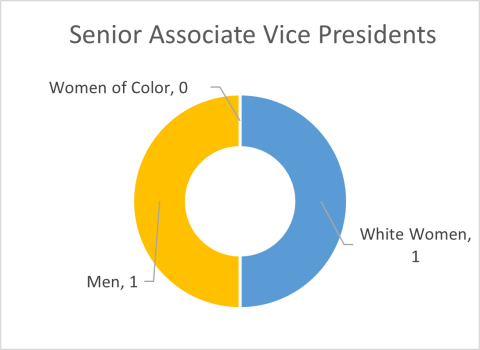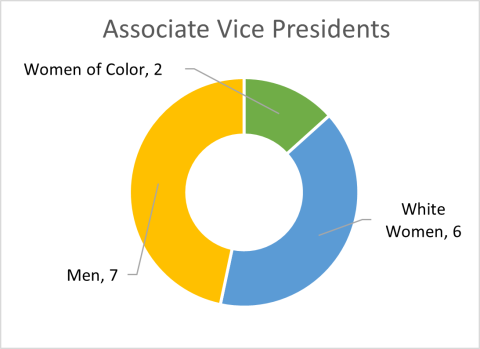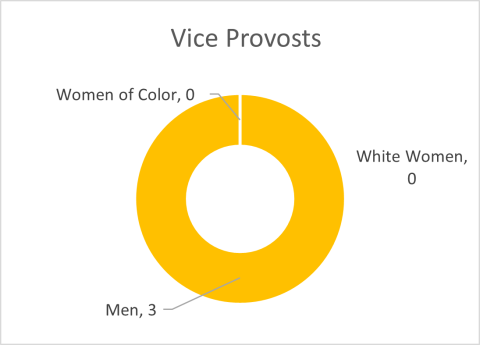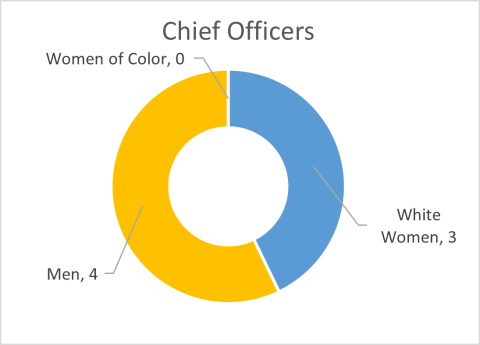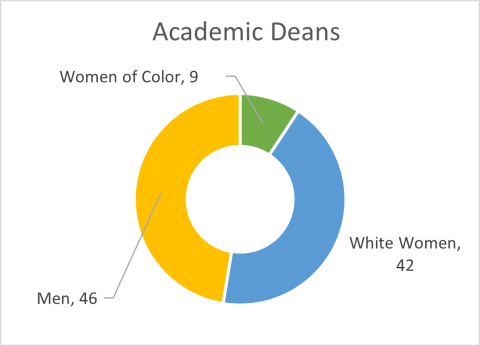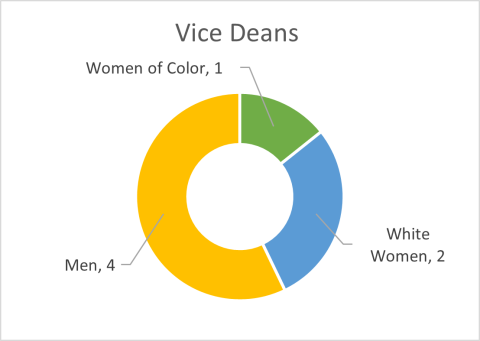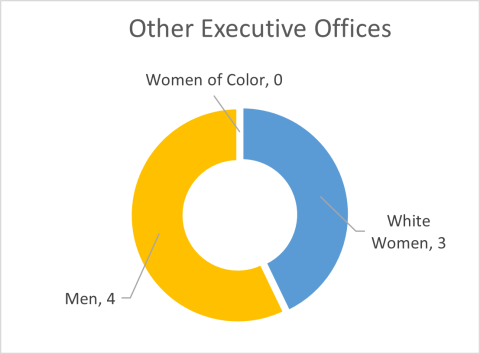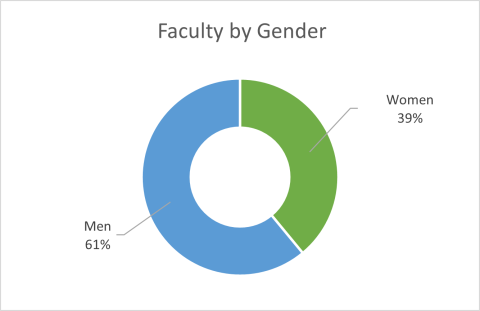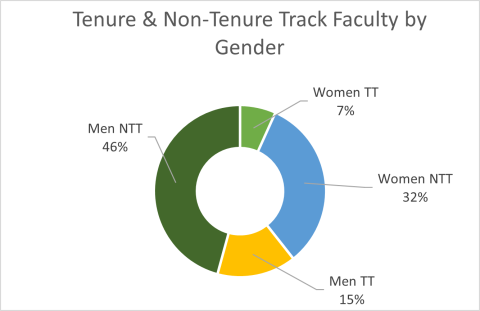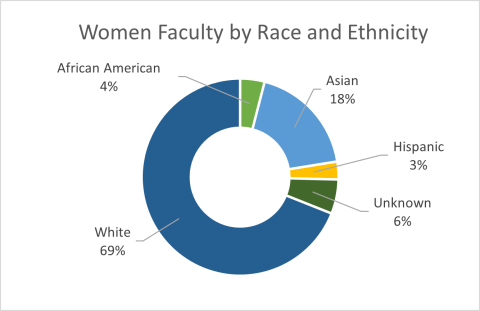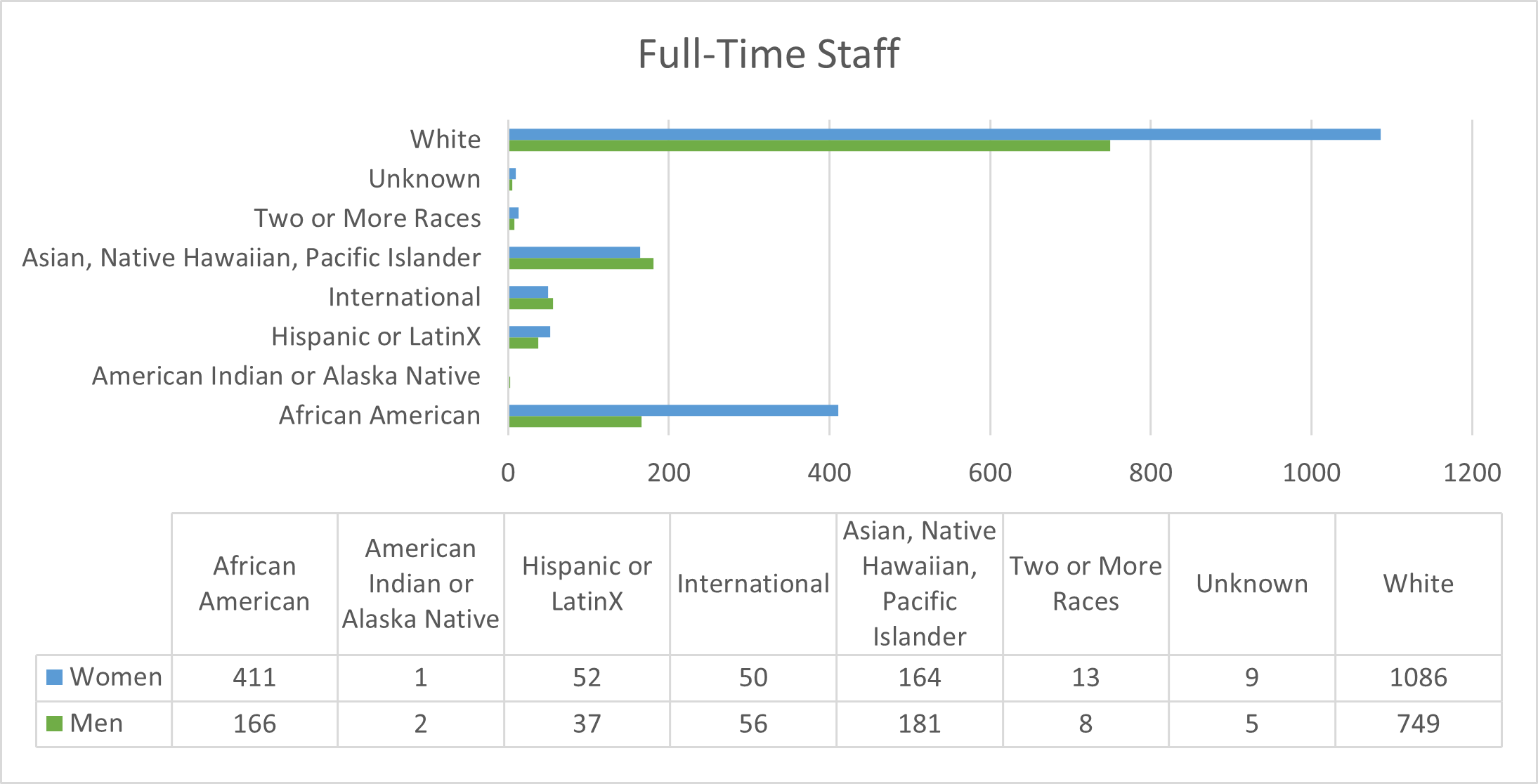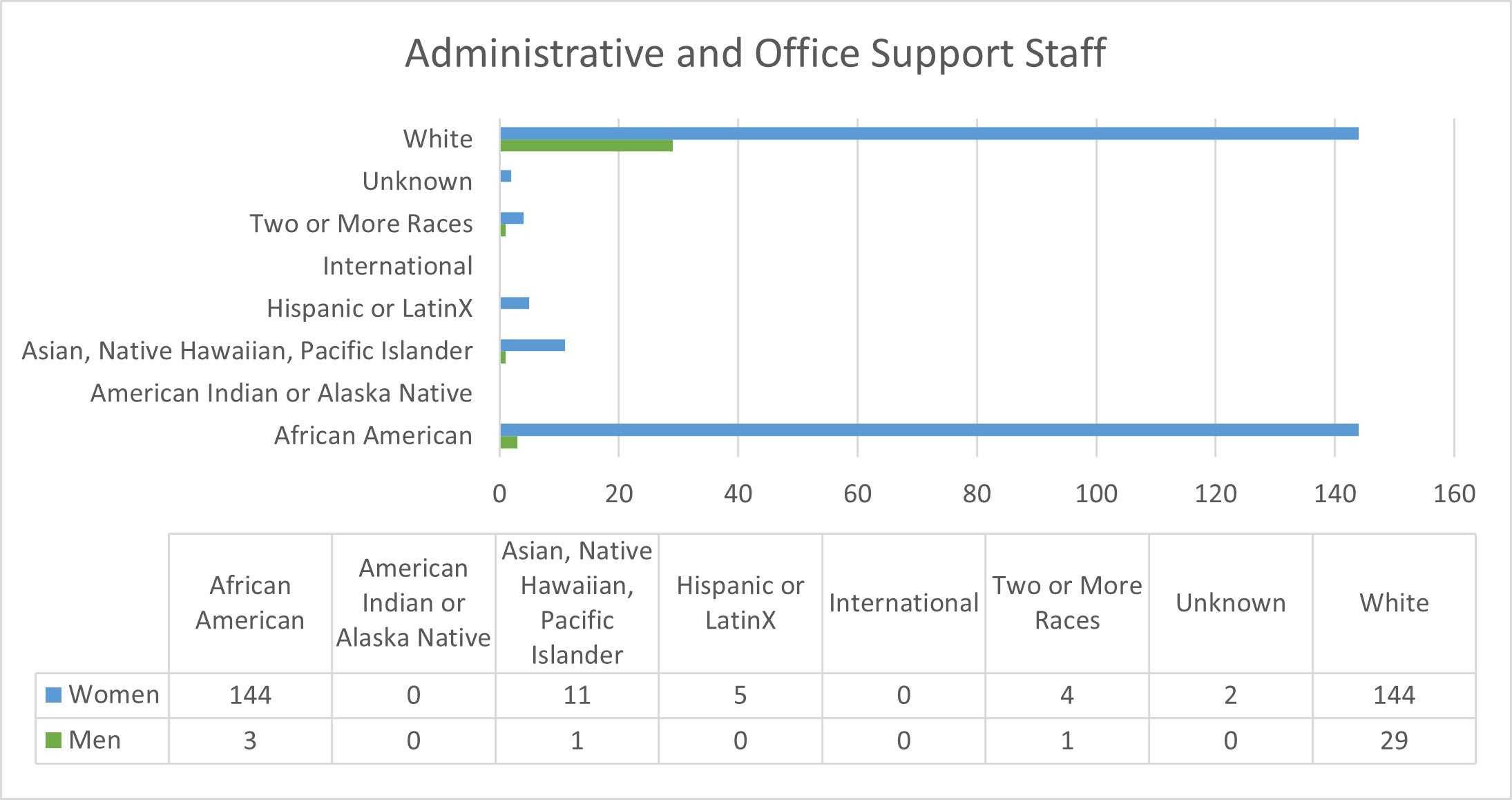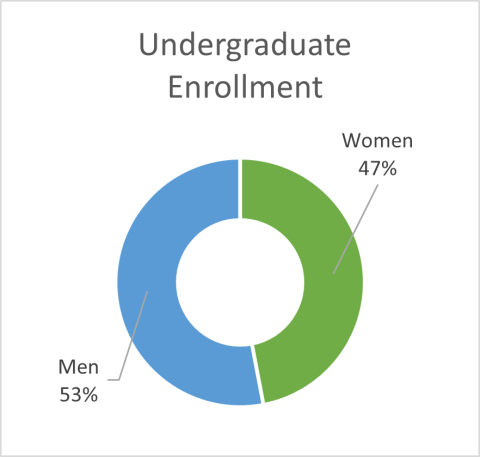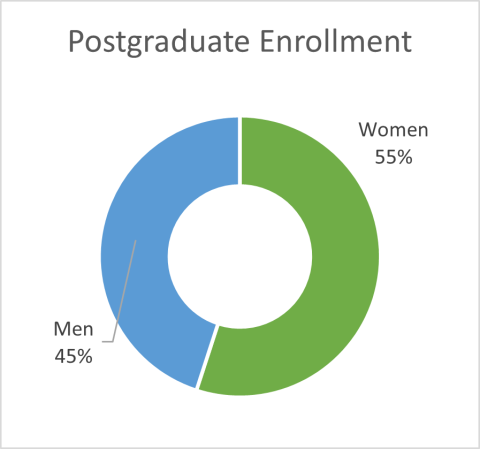Introduction
This 2021 inaugural report on the Status of Gender Equity at Case Western Reserve University is provided as an accompaniment to the speech given by Dr. Angela Clark-Taylor, director of the Flora Stone Mather Center for Women, at the 2021 Women of Achievement Awards, a ceremony intended to recognize the accomplishments of women on campus. The purpose of this report is to provide a glance at the gender composition within the campus community and generate a baseline for future improvement. If we hope to see continued change in higher education and at CWRU, we must be able to first see where we are to know how far we have come and how far we need to go. This annual report reflects institutional data to track the University’s progress in its aims for reaching gender equity for faculty, staff, and students.
This report is compiled from 2020-2021 institutional data provided by Dr. Edward Bolden and Caryn Reynolds in the CWRU Office of Institutional Research. We believe that critical quantitative research provides an opportunity to illuminate the systems of oppression otherwise clouding quantitative data. Specifically, using descriptive data is a powerful tool for starting where we are before making assumptions about where we need to go. Accordingly, we looked at our leadership, faculty, staff, and students by gender and their intersecting identities of race and ethnicity. Since the data provided was collected in accordance with federal reporting guidelines, it is limited. As such, additional information is needed on LGBTQ+ identities, ability, disaggregating Asian identities, and other identities such as religion and social class to allow us to deeply examine the full diversity of and possibility for gender equity in our campus community.
As a microcosm of a larger society, the findings in this report largely reflect the status of gender equity within all higher education and within our democracy. At the same time, it suggests areas in which work is warranted. With this information, the Mather Center intends to pursue additional research to continue to contextualize and respond to the barriers to gender equity on campus, including combing this data with climate surveys to more deeply understand the limits of gender equity experienced by all members of the campus community.
Executive Leadership
Of the executive leadership at CWRU, 41% identify as women and only 5% are Women of Color. No Women of Color are in leadership roles above associate vice president. Further, no Women of Color executive leaders identify as Hispanic or Latinx. Given the importance of executive leadership’s influence on the priorities, functioning, and success of a university community, this gap points to a critical lack of perspective of Women of Color in the daily decision-making of the University, which in turn mirrors representation along the campus faculty, staff, and students at CWRU.
Faculty
In most need of cultivating inclusion of women’s leadership through internal promotion is leadership in our academic department. Although women comprise 39% of all faculty roles at CWRU, only 19% of department chairs are women, and only 4% of department chairs identify as Women of Color broadly. None identify as Black women.
Of all the faculty roles at CWRU, women are more than 4 times as likely to have a non-tenure track position versus men at roughly 3 times as likely.
Women comprise 31% of all tenure-track faculty positions at CWRU yet represent 41% of all the non-tenure track positions. White women, Women of Color, and Men of Color are more likely to be in non-tenure track roles where critical data is not regularly benchmarked, including areas such as salary equity. Even in the schools where women are overrepresented, such as the School of Nursing or the Mandel School of Applied Social Science, women are more likely to be in non-tenure track roles. This points to a need for further examination of the barriers keeping women and people of color out of tenure-track roles and the implications of their lack of representation within the tenured faculty, particularly as it pertains to the acceptance and maintenance of the status quo.
Moreover, Black, Hispanic, and Latinx women are underrepresented within all faculty roles at CWRU, pointing to a need for further examination of the racialized experiences Black, Hispanic, and Latinx women faculty face on campus.
Note: All categories based on IPEDS reporting guidelines. Hawaiian/Pacific Islander, International, Multiracial, and Native American identities each comprise less than or equal to 1% of all women-identified faculty at CWRU.
Further, of all faculty at CWRU, more women faculty are in non-tenure track roles than are on the tenure track. This is true across nearly every race/ethnicity excluding Hawaiian/Pacific Islander, of which there are no faculty members on the tenure track, and international women, who comprise less than 1% of faculty. The opposite is true for men. In nearly every racial category, more men faculty are on the tenure track rather than the non-tenure track.
| Race/Ethnicity | Gender | Tenure Track | Non-Tenure Track |
|---|---|---|---|
| African American | Men | 2.37% | 0.98% |
| Women | 1.19% | 1.67% | |
| Asian | Men | 13.44% | 11.63% |
| Women | 5.53% | 7.63% | |
| Hawaiian/Pacific Islander | Men | 0.00% | 0.11% |
| Women | 0.00% | 0.07% | |
| Hispanic | Men | 2.37% | 1.31% |
| Women | 0.53% | 1.31% | |
| International | Men | 1.45% | 0.07% |
| Women | 0.66% | 0.07% | |
| Multiracial | Men | 0.13% | 0.07% |
| Women | 0.00% | 0.15% | |
| Native American | Men | 0.26% | 0.04% |
| Women | 0.00% | 0.07% | |
| Unknown | Men | 0.00% | 3.45% |
| Women | 0.13% | 2.76% | |
| White | Men | 48.75% | 40.73% |
| Women | 23.19% | 27.87% | |
| Total | 100% | 100% | |
In faculty rank, men outnumber women in every category aside from Instructor and Senior Instructor. Data on Lecturer rank was unavailable.
| Rank | Men | Women | Total | Men | Women |
|---|---|---|---|---|---|
| Instructor | 53 | 84 | 137 | 38.69% | 61.31% |
| Senior Instructor | 30 | 36 | 66 | 45.45% | 54.55% |
| Assistant Professor | 851 | 764 | 1615 | 52.69% | 47.31% |
| Associate Professor | 449 | 287 | 736 | 61.01% | 38.99% |
| Professor | 746 | 211 | 957 | 77.95% | 22.05% |
| Total | 2129 | 1382 | 3511 | 60.64% | 39.36% |
Staff
Nearly 60% of all university staff are women and women are overrepresented in support staff roles at 90%. In addition, 46% of support staff roles are held by Black women and only 2% of all staff roles are held by Latinx or Hispanic women. Native American women on staff are represented by just 2 women. Support staff roles tend to be non-exempt and have less job mobility, pointing to further equity barriers for women working in staff positions on campus.
Students
While the national average of women students has risen to 57% for undergraduates and 58.5% for graduate students, 47% of CWRU undergraduate students and 55% of graduate students are women. One might speculate that as an elite research and STEM focused school women in these areas may still face barriers to joining our community.
Note: Data on student enrollment can be found on CWRU’s Institutional Research page.
Conclusion
Though this report necessarily highlights comparisons within demographics, the intended takeaway is a renewed recognition for recruitment and retention efforts with an emphasis on the experiences of students, faculty, and staff of all marginalized gender identities have on campus. To this end, we chose to report the descriptive statistics as available to plainly represent the status of gender equity at Case Western Reserve University rather than to present an analysis, integrated literature review, or highlight existing Mather Center programs and initiatives to support gender equity.
Through this report, the Mather Center responds to the University’s Think Big Strategic Plan Pathway 3: Achieve Social Impact and Pathway 4: Shape the Agora. The Mather Center is focusing on using research and evaluation, professional and leadership development, education and advocacy, and community engagement as strategies to reach our goal of leading, empowering, and innovating to create a shared culture of support for gender equity at Case Western Reserve University and establish the Mather Center as an expert resource for women and gender equity in higher education.
Yet we know that we cannot and are not working toward gender equity alone. If you or your office are taking steps toward gender equity on campus, please submit your work/initiative information here.
A PDF version of this report can be found here: 2021 Status of Women and Gender Equity at CWRU
To cite this report:
Hauser, A. M., & Clark-Taylor, A. (2021). 2021 status of gender equity at Case Western Reserve University. Flora Stone Mather Center for Women. https://case.edu/centerforwomen/research/status-women-and-gender-equity


